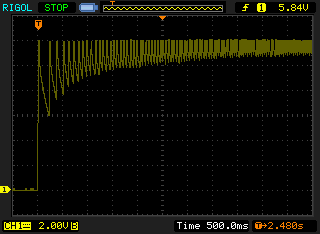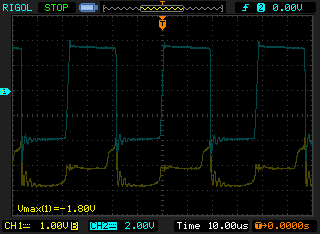I pre-ordered this computer in April, 1984, after attending a presentation at my workplace (I think). There was no internet as we know it back then. I distinctly remember some guy touting the amazing graphics and the advanced 8MHz 68000 CPU. I pre-ordered it on the spot. It cost $2500, with another $500 for the dot-matrix printer. That was a huge chunk of my income at the time, but my wife and I thought it would be a good way to introduce our children, age 4 and 7, to modern computers. My previous personal computer was a TRS80 model 4, with a whopping 48k of RAM and a home built 5.25” floppy controller, which my wife insisted that I sell prior to receiving the new Mac.
I replaced the Fat Mac with a Mac IIci in 1990. I had enhanced the Fat Mac as far as possible before retirement: it had a New Life board attached in order to run a 50MB SCSI hard drive (cost $1200). I think at some point I had replaced the power supply board as well. It has been relegated to an attic since then. I was loath to sell or dispose of it — either sentimentality or not willing to part with something that was perceived as valuable from an earlier era.
I recently decided to retrieve the old Mac and see if it still worked. When I plugged it in and turned on the power switch it demonstrated its unhappiness with a “flub-flub-flub” from its speaker. This indicated that the power supply board was probably the culprit.
The Fat Mac Power Supply:


The above trace is of the +12V supply (the only one that is regulated by the SMPS) starting up and then turning off when the SCR prematurely triggers. The circuit is powered by 120VAC, so the SMPS is restarted continuously by the kickstarter circuitry. This is a different phenomenon than what happens when the +12V supply is crowbarred by the overvoltage SCR, Q8. In that case, the +12V output would rise to 13V and the sawtooth waveform would have a lower frequency.

This trace shows what is happening when the SMPS is regulating the output. Ch2 is the transformer secondary feeding the base of Q11 via R46. Ch1 is the gate of the SCR Q10. Note the peaking of the gate when the anode of the SCR is rising. This indicates that the SCR is sensitive to triggering when subjected to high dV/dt.

I managed to capture the event that terminates the SMPS operation. Top trace: voltage across R47. Bottom trace: voltage at gate of Q10. The SCR, Q10, is triggered at the start of the SMPS cycle by high dV/dt. The SCR prevents Q11 turning on, which stops the SMPS operation. Normally, the kickstart circuit would start the SMPS again, after a bit of delay, but the kickstart is not operational when the SMPS is powered by DC supplies, which is required to use the oscilloscope.
An Active Solution:
Using the KISS (keep it simple stupid) philosophy, the first approach I tried was a capacitor across the gate-anode of Q10 to see if that would fix the dV/dt problem. No luck. Plus I was concerned that the added capacitance might interfere with the SMPS operation.
At this point I'm out of simple fixes using component value changes or adding passive component fixes. I'm thinking that the circuit below will blank the dV/dt during the rising edge of the transformer secondary.

I simulated the circuit in LTSPICE. VIN is the transformer secondary feeding the base of Q11, GND is the cathode of Q10, and VOUT is the gate of Q10. I thought it had a good chance of working. Basically the circuit short-circuits the gate of Q10 during the rising edge of the signal on the anode of Q10. But the blanking event should not last too long or it will interfere with the SMPS operation. I breadboarded the circuit and it appeared to fix the dV/dT problem:

The peaking at the gate of Q10 is nearly eliminated. Yay!
I built up a protoboard of the circuit, attached it with hot glue to the power supply PCB and connected it to the appropriate traces.

I also removed R47 from the PCB to raise the operating point of the circuit closer to the mid-point of the output range of the LM324 opamp. When I flipped the power switch everything was wonderful for about 2 minutes: the Mac booted (no flup-flup) and displayed the floppy disk icon with a blinking question mark. Then all hell broke loose. The Mac rebooted after a few "flup-flups" and proceeded to reboot every second or so. Obviously it was not happy.
At this point I remembered my KISS attempt with a capacitor across the gate-cathode of Q10, so I soldered a 4.7nF capacitor between those two points. I put the capacitor on the solder side of the PCB. Apparently the capacitor is necessary to prevent noise or interference from spuriously triggering Q10.

Note that the PCB is beginning to look a bit groaty after all of the soldering and re-soldering of components, but that can be cleaned up later. I also changed R47 and R49 to 5.6Ω, yielding an effective 2.8Ω. The previous values of 1.5Ω seemed too low to me because the output of the LM324 opamp was close to 1V. With the increase in R47 and R49 values the LM324 output raised to 4V when regulating.
After these changes the Macintosh boots and remains in a steady state for several hours. It appears that my task is coming to an end.
[Edit 2018-11-09: The display blinks when a floppy disk is inserted. This is a symptom of the power supply not being able to handle the current load of the disk drive. I had increased R47 and R49 too much. When I reduced those resistors to nearly their old values (using 2.2Ω resistors instead of the original 1.5Ω) the display doesn't blink anymore. I also replaced the large electrolytic capacitors C24-26, C29 and C31 as a preventative measure. The voltage across R36 when the power supply was regulating at normal operating current was about 0.9V -- a bit low, but still room for operation.
I left the Mac running for a couple hours and when I returned it had rebooted. The only thing that I could think of at this point was to increase the 4.7nF capacitor that I had placed between the gate-cathode of Q10. There must be a noise glitch that prematurely triggers Q10 and disrupts the power supply operation. I replaced the 4.7nF with a 10nF ceramic. After this the Mac has not spontaneously rebooted after several 6 hour tests. I'm done.]
Pudding Proof:
I re-attached the vinyl sheet covering the solder side of the power supply PCB and re-assembled the case. I still have the original system disk that came with the Mac. Both the mouse and keyboard still work.

There is not room on any flat surfaces in the house to set up this computer so I set it up on the kitchen counter. I don't have many floppy disks that will run on this computer, but I did save the original system disk (note the version number displayed above) and the MacPaint/MacWrite disks that were still in the original box. Note also the expensive canvas case, with the embroidered Apple logo, to the right. Also, I still have the 800k external floppy drive -- necessary to save countless disk swaps.

I is difficult to express the amazement of MacPaint when it was released back in 1984. There was nothing like it previously.
The only other floppy disk that I kept was the game, "Ancient Art of War at Sea", by Broderbund. It was my son's favorite game when he was nine.
 Bud Bennett
Bud Bennett